
BENEFICIAL HERBS
The Content is not intended to be a substitute for professional medical advice, diagnosis, or treatment. Always seek the advice of your physician or other qualified health provider with any questions you may have regarding a medical condition.
20 BENEFICIAL HERBS AND FOODS
For centuries, cultures around the world have relied on traditional herbal medicine to meet their healthcare needs. Despite medical and technological advancements of the modern era, the global demand for herbal remedies is on the rise. In fact, it’s estimated that this industry grosses about $60 billion annually. Below are 20 beneficial herbs and foods for your health considerations.
APPLE CIDER VINEGAR
Apple cider vinegar is a popular home remedy. People have used it for centuries in cooking and medicine. Many people claim it can relieve a wide range of health complaints, but you may wonder what the research says. Apple cider vinegar has various healthful properties, including antimicrobial and antioxidant effects. What’s more, evidence suggests it may offer health benefits, such as aiding weight loss, reducing cholesterol, lowering blood sugar levels, and improving the symptoms of diabetes.
Apple cider vinegar is mostly apple juice, but adding yeast turns the sugar in the juice into alcohol. This is a process called fermentation. Bacteria turn the alcohol into acetic acid. That’s what gives vinegar its sour taste and strong smell. Some people say the “mother,” the cloud of yeast and bacteria you might see in a bottle of apple cider vinegar, is what makes it healthy. These things are probiotic, meaning they might give your digestive system a boost, but there isn’t enough research to back up the other claims.
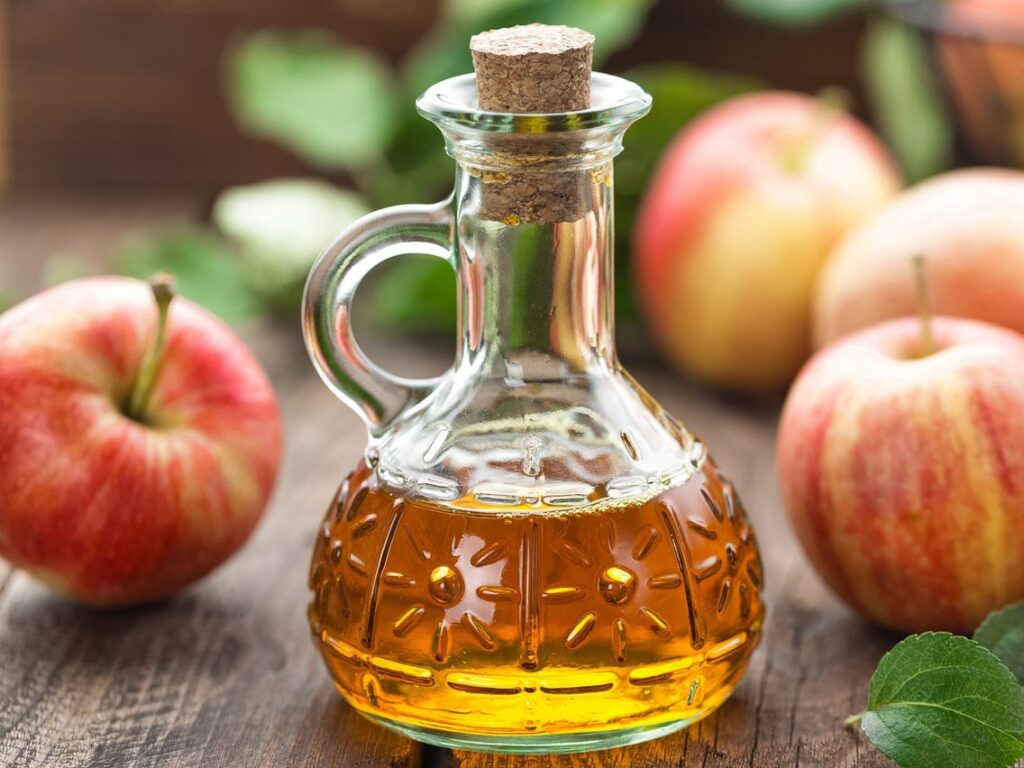
BITTER MELON
Bitter melon — also known as bitter gourd or Momordica charantia — is a tropical vine that belongs to the gourd family and is closely related to zucchini, squash, pumpkin, and cucumber. It’s cultivated around the world for its edible fruit, which is considered a staple in many types of Asian cuisine.
The Chinese variety is typically long, pale green, and covered with wart-like bumps. On the other hand, the Indian variety is more narrow and has pointed ends with rough, jagged spikes on the rind. In addition to its sharp flavor and distinct appearance, bitter melon has been associated with several impressive health benefits. Below are some benefits of bitter melon and its extract:
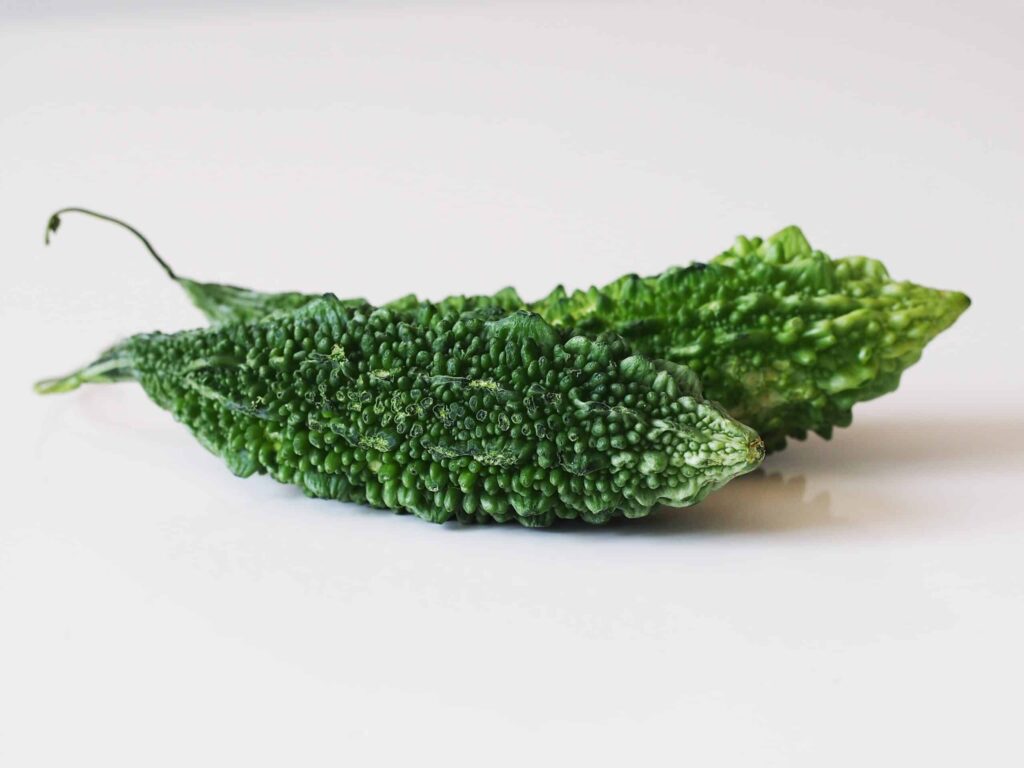
1. Packs Several Important Nutrients – Bitter melon is a great source of several key nutrients. One cup (94 grams) of raw bitter melon provides:
- Calories: 20
- Carbs: 4 grams
- Fiber: 2 grams
- Vitamin C: 93% of the Reference Daily Intake (RDI)
- Vitamin A: 44% of the RDI
- Folate: 17% of the RDI
- Potassium: 8% of the RDI
- Zinc: 5% of the RDI
- Iron: 4% of the RDI
Bitter melon is especially rich in vitamin C, an important micronutrient involved in disease prevention, bone formation, and wound healing. It’s also high in vitamin A, a fat-soluble vitamin that promotes skin health and proper vision. It provides folate, which is essential for growth and development, as well as smaller amounts of potassium, zinc, and iron. Bitter melon is a good source of catechin, gallic acid, epicatechin, and chlorogenic acid, too—powerful antioxidant compounds that can help protect your cells against damage. Plus, it’s low in calories yet high in fiber — fulfilling approximately 8% of your daily fiber needs in a single one-cup (94-gram) serving.
SUMMARY
Bitter melon is a good source of nutrients like fiber, vitamin C, folate and vitamin A.
2. Can Help Reduce Blood Sugar – Thanks to its potent medicinal properties, bitter melon has long been used by indigenous populations around the world to help treat diabetes-related conditions. In recent years, several studies confirmed the fruit’s role in blood sugar control. A 3-month study in 24 adults with diabetes showed that taking 2,000 mg of bitter melon daily decreased blood sugar and hemoglobin A1c, a test used to measure blood sugar control over three months.
Another study in 40 people with diabetes found that taking 2,000 mg per day of bitter melon for 4 weeks led to a modest reduction in blood sugar levels. What’s more, the supplement significantly decreased levels of fructosamine, another marker of long-term blood sugar control. Bitter melon is thought to improve the way that sugar is used in your tissues and promote the secretion of insulin, the hormone responsible for regulating blood sugar levels. However, research in humans is limited, and larger, more high-quality studies are needed to understand how bitter melon may impact blood sugar levels in the general population.
SUMMARY
Bitter melon has been shown to improve several markers of long-term blood sugar control, including levels of fructosamine and hemoglobin A1c. Still, more high-quality research is needed.
3. May Have Cancer-Fighting Properties
Research suggests that bitter melon contains certain compounds with cancer-fighting properties. For example, one test-tube study showed that bitter melon extract was effective at killing cancer cells of the stomach, colon, lung, and nasopharynx — the area located behind the nose at the back of your throat.
Another test-tube study had similar findings, reporting that bitter melon extract was able to block the growth and spread of breast cancer cells while also promoting cancer cell death.
Keep in mind that these studies were performed using concentrated amounts of bitter melon extract on individual cells in a laboratory. Further research is needed to determine how bitter melon may affect cancer growth and development in humans when consumed in the normal amounts found in food.
SUMMARY
Test-tube studies show that bitter melon may have cancer-fighting properties and could be effective against stomach, colon, lung, nasopharynx, and breast cancer cells.
4. Could Decrease Cholesterol Levels
High levels of cholesterol can cause fatty plaque to build up in your arteries, forcing your heart to work harder to pump blood and increasing your risk of heart disease. Several animal studies found that bitter melon may decrease cholesterol levels to support overall heart health.
One study in rats on a high-cholesterol diet observed that administering bitter melon extract led to significant decreases in levels of total cholesterol, “bad” LDL cholesterol, and triglycerides. Another study noted that giving rats a bitter melon extract significantly reduced cholesterol levels compared to a placebo. Higher doses of bitter melon showed the greatest decrease. Still, current research on the potential cholesterol-lowering properties of bitter melon is mostly limited to animal studies using large doses of bitter melon extract. Additional studies are needed to determine whether these same effects apply to humans eating the gourd as part of a balanced diet.
SUMMARY
Animal studies show that bitter melon extract may decrease cholesterol levels, which could help support heart health. Nonetheless, human research to confirm these effects is lacking.
5. May Aid Weight Loss
Bitter melon makes an excellent addition to a weight loss diet, as it’s low in calories yet high in fiber. It contains approximately 2 grams of fiber in each one-cup (94-gram) serving. Fiber passes through your digestive tract very slowly, helping keep you fuller for longer and reducing hunger and appetite.
Therefore, swapping higher-calorie ingredients with bitter melon could help increase your fiber intake and cut calories to promote weight loss.
Some research also shows that bitter melon can have beneficial effects on fat burning and weight loss.
One study found that consuming a capsule containing 4.8 grams of bitter melon extract each day led to significant decreases in belly fat. Participants lost an average of 0.5 inches (1.3 cm) from their waist circumference after seven weeks. Similarly, a study in rats on a high-fat diet observed that bitter melon extract helped decrease body weight compared to a placebo. Note that these studies were performed using high-dose bitter melon supplements. It remains unclear whether eating bitter melon as part of your regular diet would have the same beneficial effects on health.
SUMMARY
Bitter melon is low in calories but high in fiber. Human and animal studies have found that bitter melon extract may also help decrease belly fat and body weight.
6. Versatile and Delicious
Bitter melon has a sharp flavor that works well in many dishes. To prepare it, start by washing the fruit and cutting it lengthwise. Then use a utensil to scoop out the seeds from the center, and cut the fruit into thin slices. Bitter melon can be enjoyed raw or cooked in various recipes. In fact, it can be pan-fried, steamed, baked, or even hollowed out and stuffed with your choice of fillings. Here are a few interesting ways to add bitter melon to your diet:
- Juice bitter melon along with a few other fruits and vegetables for a nutrient-packed beverage.
- Mix bitter melon into your next stir-fry to bump up the health benefits.
- Sauté bitter melon alongside tomatoes, garlic, and onions and add to scrambled eggs.
- Combine seedless bitter melon with your choice of dressing and garnish for a savory salad.
- Stuff with ground meat and vegetables and serve with a black bean sauce.
SUMMARY
Bitter melon is easy to prepare and can be used in many different dishes and recipes.
Potential Side Effects
When enjoyed in moderation, bitter melon can be a healthy and nutritious addition to your diet. However, consuming high amounts of bitter melon or taking bitter melon supplements may be associated with several adverse effects. In particular, bitter melon has been linked to diarrhea, vomiting, and stomach pain. It’s also not recommended for women who are pregnant, as its long-term effects on health have not been extensively studied. Due to its impact on blood sugar, you should consult with your healthcare provider before eating it if you’re taking any blood sugar-lowering medications. Also, talk with a healthcare professional before supplementing with bitter melon if you have any underlying health conditions or are taking any medications, and be sure to use as directed.
SUMMARY
Bitter melon may be associated with adverse side effects. Pregnant women, people with underlying health problems, and those taking blood sugar-lowering medications should consult their doctor before use.
The Bottom Line
Bitter melon is a fruit in the gourd family with a unique appearance and flavor. It’s not only rich in several important nutrients but also linked to numerous health benefits, including improved blood sugar control and cholesterol levels. Note that people who are pregnant or on certain medications — particularly blood sugar-lowering medications — should speak to their healthcare provider before consuming high amounts or taking supplements. Still, in moderation, bitter melon makes for a flavorful, nutritious, and easy addition to a healthy, well-rounded diet.
BLACK SEED OIL
Black seeds are also known as black caraway, black cumin, kalonji, and black onion seeds. They come from Nigella sativa, a small plant with pale purple, blue, or white flowers that grows in Eastern Europe, Western Asia, and the Middle East.
People have used the tiny black seeds of the fruits of N. sativa as a natural remedy for thousands of years. The seeds can also flavor curries, pickles, and bread in a similar way to cumin or oregano. Black seed oil contains thymoquinone, which is an antioxidant and anti-inflammatory compound that may also have tumor-reducing properties.
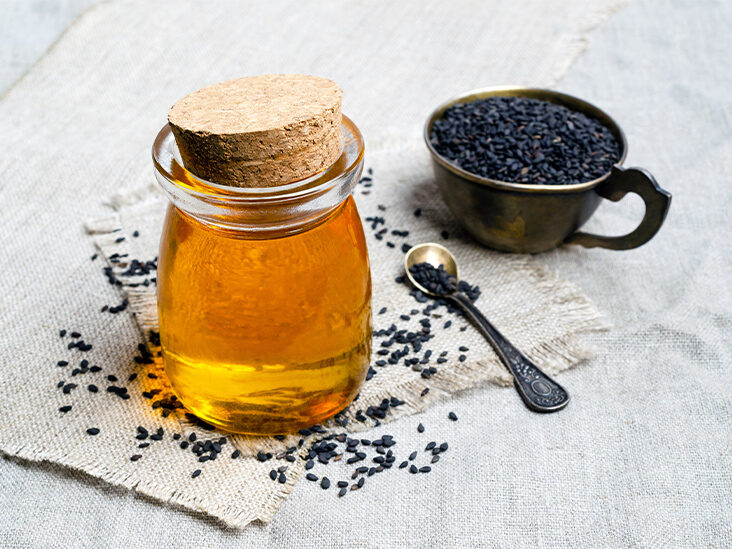
People can ingest black seed oil in the form of capsules or apply it topically to benefit the skin. It is also possible to add the oil to massage oils, shampoos, homemade skin-care products, and fragrances. High-quality black seed oil is also suitable for use in cooking, baking, and beverages.
Scientists with a range of specialties have researched the possible benefits of black seed oil. However, it is important to note that many studies to date have used cells or animals as models, and there is limited research available on the effects of black seed oil in humans.
Research has shown that black seed supplementation can help lower people’s body mass index (BMI). The study participants did not report any severe side effects from taking this supplement. A systematic review published in the Journal of Diabetes & Metabolic Disorders in 2013 found that black seed oil could be effective in tackling obesity.
Black seed oil may be beneficial for people with the following skin conditions:
- Eczema: According to a small-scale 2013 study comparing the therapeutic benefits of N. sativa with those of prescription medications, black seed oil can reduce the severity of hand eczema.
- Acne: Research suggests that the antimicrobial and anti-inflammatory effects of black seed oil can improve acne. In one study, 58 percent of participants rated their response to this treatment as good, while 35 percent felt their results were moderate.
- Psoriasis: A 2012 study on mice suggests that the oil may also have antipsoriatic benefits.
- Black seed oil may also hydrate hair, soften skin, and act as a moisturizer, although there is a lack of scientific evidence to confirm these benefits.
Black seed oil may also be beneficial for some health conditions, including the following:
- Cancer – Recent studies have shown that the thymoquinone in black seed oil can influence programmed cell death, or apoptosis, in several types of cancer cell. These include brain cancer, leukemia, and breast cancer cells. However, much of the research on the effects of black seed oil on cancer uses cells rather than live humans, so researchers do not yet know how effective the oil may be to treat people with cancer.
- Liver and kidney function – According to a 2013 study on rats, black seed oil may reduce liver and kidney disease complications and improve the organ structures. Researchers do not know if these effects would also occur in humans.
- Diabetes – According to an article in the Journal of Endocrinology & Metabolism, black seed oil may have antidiabetic properties and improve blood sugar levels. Again, this study used animal models, so more research is necessary to confirm the effectiveness of the oil in humans.
- Infertility – A placebo-controlled clinical trial on men with abnormal sperm and infertility has found that black seed oil can improve sperm movement and increase sperm count and semen volume.
BOTSWELLIA
Boswellia, also known as Indian frankincense, is an herbal extract taken from the Boswellia serrata tree. Resin made from boswellia extract has been used for centuries in Asian and African folk medicine. It’s believed to treat chronic inflammatory illnesses as well as a number of other health conditions. It also may be effective to decrease osteoarthritis related pain and improve physical function in the short term (1-3 months), however long-term benefit has not been observed.
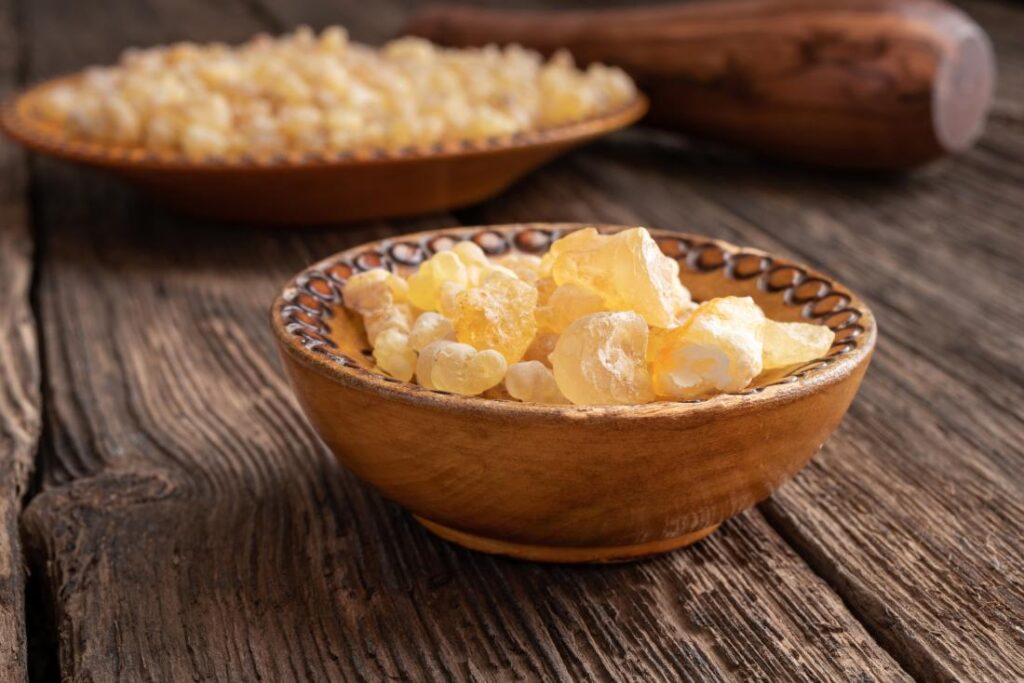
Scientific research is beginning to support the benefits of boswellia, but most studies to date have used cell or animal models. Scientists do not know the effects of this substance in humans, so many more clinical trials with humans are necessary before doctors can recommend this treatment.
What are the benefits? Natural health practices have used boswellia for centuries to treat various chronic inflammatory disorders. The scientific research on boswellia is less developed, but it is beginning to unveil potential uses for the resin and its extracts. Boswellia and its active ingredients, such as boswellic acid, appear to have a good anti-inflammatory effect on the body, according to a review article. The following sections discuss the evidence behind its potential benefits for inflammatory health conditions.
Inflammation around the joints is the leading cause of rheumatoid arthritis (RA) symptoms. Many treatments for RA, which include nonsteroidal anti-inflammatory drugs (NSAIDs) and steroids, focus on reducing inflammation. Boswellia appears to be effective in reducing inflammation, so it may also lessen the symptoms of RA.
The Arthritis Foundation recommend boswellic acid capsules as a potential therapy for RA, as well as for osteoarthritis. The authors of a 2019 study suggested that an active extract of boswellia may help reduce inflammation in people with RA. However, this study used rats, so the results may not apply to humans.
In this animal model, the anti-inflammatory effect of boswellia was less significant than that of a standard prescription medication called indomethacin. However, the researchers noted that the extract might be useful as a complementary therapy to support traditional RA treatment.
A 2016 review paper reports that boswellic acids might have antitumor properties and be toxic to cancerous cells. The authors conclude that this could make them helpful in future cancer treatments, though clinical trials are necessary to confirm this. A recent study in the journal Oncotarget also found that the essential oil from boswellia impaired aggressive skin cancer cells without harming healthy skin cells. However, the researchers used cells and animal models. While these early results seem promising, more research in humans needs to expand on these initial findings to determine how boswellia may help with cancer therapy.
The anti-inflammatory effects of boswellia may also be beneficial for people with inflammatory bowel diseases (IBD), such as ulcerative colitis and Crohn’s disease. A study in the World Journal of Gastroenterology looked into the action of these compounds. In animal models, boswellic acids improved markers of IBD without causing adverse effects on the surrounding organs. They may, therefore, prove to be a useful supportive treatment for these chronic conditions.
Again, this is early research, and research in humans will need to back up these findings before experts can make any recommendations.
Boswellic acid may also have a role in asthma treatment. Research findings have shown that boswellic acid suppresses inflammation in the airways and inhibits the secretion of cytokines, which are markers that lead to inflammation. Thus, boswellic acid appears to block off the allergic response that causes an asthma reaction in the first place. In the future, this may make boswellia a helpful complementary treatment for asthma. For now, researchers need to focus on working toward studies in humans.
A 2019 study found that boswellia may be a helpful tool in medical efforts to treat Parkinson’s disease. In animal models, boswellia had an anti-inflammatory and antioxidant effect, which appeared to protect neurons in the brain and improve motor function in a rat model of Parkinson’s disease. However, this is early research that needs backing from studies involving humans.
The Arthritis Foundation recommend taking approximately 300–400 milligrams (mg) of boswellia three times per day to deliver boswellic acids to the body. They recommend looking for capsules that contain 60% boswellic acid, as it is the active ingredient. Many retailers, both online and in stores, will sell the resin in capsules. It may occasionally be possible to buy the raw resin, which has a hard texture similar to that of sap. People may extract active ingredients, such as boswellic acids, from the resin and add them to a capsule or tablet. People can choose between different boswellia extracts and supplements in stores or online.
Pure frankincense essential oil may also deliver active compounds to the body. Diluting this essential oil in a carrier oil and applying it to the body may allow the compounds to enter through the skin. It is important to test the diluted oil on a small area of skin first to check for reactions.
Boswellia may also be an active ingredient in natural blends for inflammation, which often include other ingredients, such as turmeric. Anyone considering these products should talk to their doctor before using them to discuss potential drug interactions.
BURDOCK ROOT
Burdock root comes from burdock, a genus of weeds that are related to sunflowers and part of the daisy family. It is available as a tea in various tinctures, with manufacturers promising a wide range of benefits.
Numerous studies have documented its potential to treat several common ailments, including cancer, diabetes, and inflammation. However, results have not been universally agreed upon. Native to North Asia and Europe, burdock now grows widely in the United States as a weed. In some parts of the world, people consume it as a root vegetable, much like potatoes.
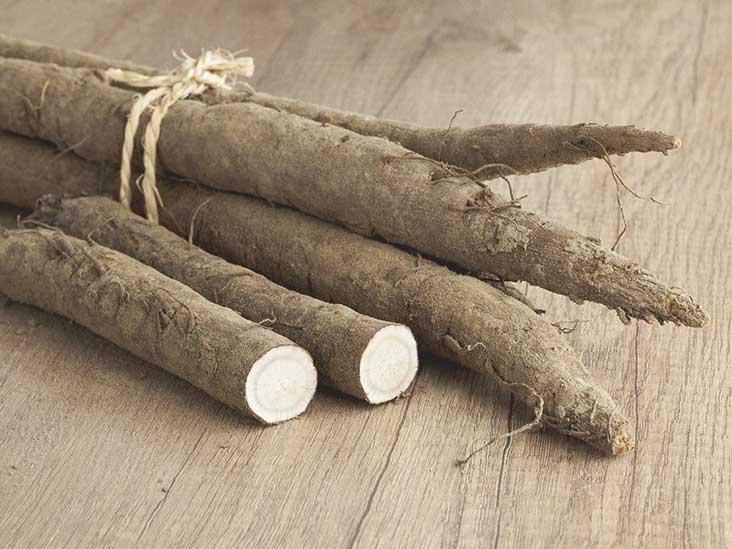
Burdock is a large weed covered in spurs that can grow over 4 feet tall. It may help to lower blood sugar levels as well provide other health benefits. As with all herbal supplements, burdock can be dangerous for some people. More research is necessary to verify the claims about burdock root’s health benefits. What is burdock root? The dark roots of burdock are used in traditional medicine. Burdock has large heart-shaped leaves and produces purple flowers in the spring and autumn. In traditional medicine, it is the dark roots — not the plant itself — that offer health benefits.
Burdock contains oils, as well as compounds called tannins and plant sterols. Doctors do not know which of the plant’s components offer health benefits. The reason for this is that most research looks at burdock root as a whole and not at a specific element in the root.
Burdock root has been a part of traditional medicine, particularly traditional Chinese medicine, for centuries. Researchers are now beginning to design clinical studies to assess its benefits. Some potential health benefits of this plant include:
- Improving blood sugar and treating diabetes. A 2014 study found that burdock root could prevent dangerously high blood glucose both in a petri dish and in a live tissue sample. In a 2015 study of burdock root in mice, researchers found no benefits associated with raw burdock root. However, fermented burdock root significantly reduced blood sugar in mice.
- Treating and preventing infections. For centuries, traditional healers have recommended the use of burdock root to fight the common cold, sore throats, and other ailments. Scientific research now provides some insight into how burdock may fight infections. Some studies have found that it has antibacterial qualities. It appears to be particularly useful for killing biofilms, which are large, sticky colonies of bacteria. The oral plaque that causes cavities is one example of a biofilm. Biofilms grow throughout the body. A 2015 study found that burdock root could treat biofilm-related urinary tract infections. Research published in 2017 found that burdock might also kill other types of bacteria.
- ‘Purifying’ the blood. Although there is little western scientific evidence to support the need for detox, it has long had a role in traditional Chinese medicine. Alternative health providers often talk about detoxifying the body or purifying the blood, and practitioners of traditional medicine say burdock may purify the blood. This belief in burdock’s purification benefits could be due to its ability to fight some infections and bacteria.
- Burdock root may also act as a diuretic. Diuretics help remove water from the body, offering relief for people retaining water.
- Antioxidants help fight the effects of free radicals. Free radicals are chemicals in the body that damage the body’s cells and may be responsible for a wide range of ailments, including cancer, aging, and inflammatory disorders. They tend to accumulate with age, so researchers are interested in how antioxidants might slow the process of aging. Several studies have found that burdock root acts as an antioxidant. A 2014 study of diabetes in mice suggests that because of its antioxidant properties, burdock may improve symptoms of diabetes. Earlier research, including a 1998 study, found that burdock root actively seeks out and destroys free radicals.
- Reducing inflammation. Free radical damage, autoimmune disorders, and other medical conditions can cause chronic inflammation. Inflammation is linked to many medical conditions, including osteoarthritis. A 2014 study found that burdock root significantly decreased measures of inflammation in people with knee osteoarthritis.
- Treating or preventing cancer. Free radicals and inflammation are both linked to the development of cancer. This means that burdock’s role as an antioxidant anti-inflammatory might help to prevent cancer. Preliminary research also supports the notion that burdock can help slow the growth of cancer. A 2016 study found that burdock might slow the growth of breast cancer tumors.
CAYENNE PEPPER
Cayenne pepper contains capsaicin, which helps reduce appetite and may have anti-cancer properties. Cayenne pepper is a type of chili pepper used to prepare spicy dishes. The active ingredient in it is called capsaicin, which has been shown to reduce appetite and increase fat burning in many studies. For this reason, it is a common ingredient in many commercial weight loss supplements.
One study found that adding 1 gram of red pepper to meals reduced appetite and increased fat burning in people who did not regularly eat peppers. However, there was no effect in people who were accustomed to eating spicy food, indicating that a tolerance to the effects can build up. Some animal studies have also found capsaicin to combat certain forms of cancer, including lung, liver and prostate cancer. Of course, these observed anti-cancer effects are far from being proven in humans, so take all of this with a big grain of salt. <br>
BOTTOM LINE:
Cayenne pepper is very rich in a substance called capsaicin, which reduces appetite and boosts fat burning. It has also shown anti-cancer potential in animal studies.

CINNAMON
Cinnamon lowers blood sugar levels and has a powerful anti-diabetic effect. Cinnamon is a popular spice, found in all sorts of recipes and baked goods. It contains a compound called cinnamaldehyde, which is responsible for cinnamon’s medicinal properties.
Cinnamon has potent antioxidant activity, helps fight inflammation and has been shown to lower cholesterol and triglycerides in the blood. But where cinnamon really shines is in its effects on blood sugar levels. Cinnamon can lower blood sugar by several mechanisms, including by slowing the breakdown of carbs in the digestive tract and improving insulin sensitivity. Studies have shown that cinnamon can lower fasting blood sugars by 10-29% in diabetic patients, which is a significant amount . The effective dose is typically 0.5-2 teaspoons of cinnamon per day, or 1-6 grams.
BOTTOM LINE:
Cinnamon has numerous health benefits, and is particularly effective at lowering blood sugar levels.
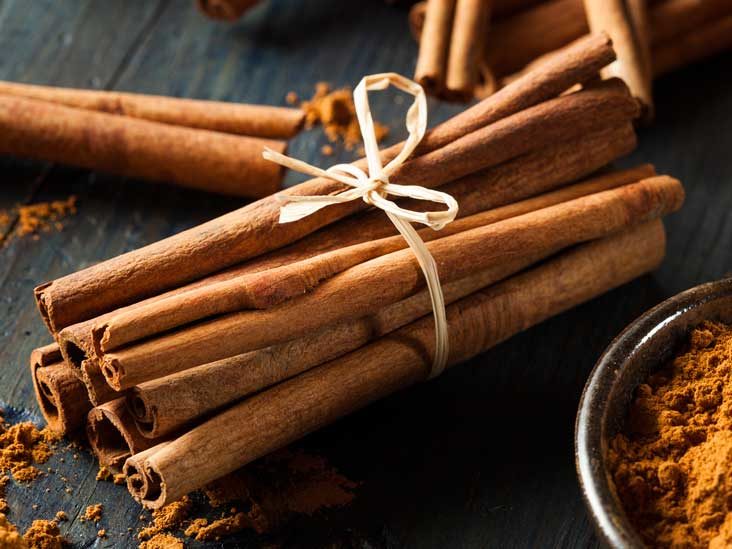
DANDELION ROOT
In traditional Chinese and Native American medicine, dandelion root has long been used to treat stomach and liver conditions. Herbalists today believe that it can aid in the treatment of many ailments, including acne, eczema, high cholesterol, heartburn, gastrointestinal disorders, diabetes, and even cancer.

Dandelion is also known as pu gong yi in traditional Chinese medicine and simhadanti in Ayurvedic medicine. Its English folk name “piss-a-bed” and French nickname “pissenlit” both refer to the root’s strong diuretic effect.
Despite its long-standing use in traditional medicine, there is a lack of scientific evidence supporting the medicinal use of dandelion root. While a number of animal and laboratory studies have been conducted, few have progressed to human trials. Here is what some of the current research says about dandelion root:
Blood Pressure. Diuretics, also known as “water pills,” are commonly used to treat high blood pressure, heart failure, liver disease, and some types of kidney disease. While valuable, the drugs may cause side effects, including muscle cramps, headaches, dizziness, and changes in blood sugar.
Some scientists believe that dandelion’s diuretic properties may have medical uses, including the treatment of prediabetes or premenstrual bloating and water retention. A 2009 study, overseen by the National Institutes of Health, found that a single dose of dandelion extract increased the frequency of urination—but not the volume—in the 28 volunteers within five hours of a dose. While the researchers were unable to determine how dandelion triggered this effect, the frequency/volume suggests that the extract may function as a bladder irritant. Further research is needed to determine whether ongoing exposure to an extract may cause side effects.
Skin Damage. In folk medicine, dried dandelion root is often ground into a paste and mixed with water to create a soothing paste for skin disorders like acne, eczema, psoriasis, rashes, and boils. While there is little evidence that dandelion can treat these conditions better or faster than leaving the skin alone, it does appear to have mild anti-inflammatory and antipruritic (anti-itching) properties. Research also suggests that it may help prevent sun damage.
A 2015 study from Canada reported that dandelion extracts are able to block harmful ultraviolet B (UVB) radiation when applied to the skin, protecting it from sun damage while lowering the risk of skin cancer.
While this suggests a potential avenue for drug development, dandelion is also known to cause contact dermatitis in some people, especially children.3 As such, you need to take care when applying any dandelion remedy to the skin to avoid an allergic response.
Diabetes. Dandelion root is believed to have anti-diabetic properties due to a soluble fiber known as inulin.4 Inulin contains a complex carbohydrate known as fructooligosaccharide (FOS) which supports the growth of healthy bacteria in the gastrointestinal tract and eliminates the unhealthy ones. This alone increases insulin sensitivity by slowing the flow of sugar from the intestines to the bloodstream, preventing spikes in either your blood sugar or insulin levels. A 2016 review of studies from Aarhus University in Denmark suggested that dandelion extract also stimulates pancreatic cells to produce insulin, better controlling blood sugar and avoiding hyperglycemia.
Liver Injury. Dandelion is often consumed as a tonic under the presumption that it “cleanses” the liver. There is some evidence, albeit sparse, to support this long-standing claim. A 2010 study published in the Journal of Ethnopharmacology reported that mice fed a dandelion root extract experienced a significant slowing in the progression of liver scarring (fibrosis) compared to mice given a placebo. According to the research, the extract was able to inactivate the primary cells involved in fibrosis, called hepatic stellate cells. Doing so all but lifted the oxidative stress on the liver, allowing the liver to heal and slowly regenerate.
Cancer. Preliminary research suggests that dandelion root may have promise as an anti-cancer agent. It does so by inducing apoptosis, also known as programmed cell death, in certain cancer cells.6 Apoptosis affects all of the cells of the body, allowing old cells to be replaced with new ones. With cancer, apoptosis ceases, allowing the tumor cells to grow unimpeded.
A 2012 study from the University of Windsor in Canada reported that dandelion root extract was able to induce apoptosis in pancreatic and prostate cancer cells in test tube studies, either slowing their growth or preventing their spread. No other cancer cell types were affected in this study. Several later studies have shown that different dandelion root extracts were able to trigger apoptosis in leukemia and melanoma.
While the studies are promising, further research is needed before dandelion root can be recommended for either the prevention or treatment of cancer.
Possible Side Effects. Dandelion root is generally considered safe and well tolerated in adults if consumed in moderation. Some people may experience side effects, including heartburn, diarrhea, upset stomach, and irritated skin. If you are allergic to ragweed, chrysanthemums, marigold, chamomile, feverfew, yarrow, or plants in the Asteraceae family (such as sunflowers and daisies), you should avoid dandelion root as it may trigger rash, watery eyes, and other allergy symptoms. Dandelion also contains iodine and latex, so avoid it if you have allergies to either of these substances.
Pregnant women, nursing women, and children are advised to avoid dandelion remedies due to the lack of research into their long-term safety. It is also possible that consuming too much dandelion may reduce fertility in women and testosterone levels in men due to a substance in the plant, called phytoestrogen, which mimics estrogen.
Drug Interactions. Dandelion can interact with certain drugs, either affecting how the drug is absorbed into the bloodstream, metabolized by the liver, or cleared from the body in urine. Speak with your doctor if you are taking a dandelion remedy along with any of the following drugs:
- Antibiotics like Cipro (ciprofloxacin) and Penetrex (enoxacin)
- Antidepressants like Elavil (amitriptyline)
- Antipsychotics like lithium and Haldol (haloperidol)
- Diuretics like Lasix (furosemide)
- Estrogen-based contraceptives
- Statin drugs like Mevacor (lovastatin) and Lipitor (atorvastatin)
- In some cases, a dose adjustment may be needed. Other drugs may also be affected, so never hesitate to tell your doctor about any herbal, naturopathic, homeopathic, or traditional medicine you may be taking
Dosage and Preparation. There are no guidelines for the appropriate use of dandelion root in the United States. However, in Europe, both the European Commission and the British Herbal Pharmacopoeia recommended the following range of doses considered safe for adults.9
- Fresh dandelion root: 2 to 8 grams daily
- Dandelion root powder: 3 to 4 grams mixed with 150 milliliters of warm water
- Dandelion tea infusion: 1 tablespoon of chopped root mixed with 150 milliliters of hot water for 20 minutes
- Fresh root extract: 1 to 2 tablespoons daily
- Dried dandelion extract: 0.75 to 1.0 grams daily
- Dandelion root supplements are also available in drugstores and vitamin supplement stores, along with tinctures, teas, extracts, ointments, powders, and dried organic root.
As a rule of thumb, never exceed the dosage recommended by the manufacturer. If you experience side effects of any sort, stop treatment and call your doctor. Dandelion root remedies are classified as dietary supplements by the U.S. Food and Drug Administration (FDA) and do not need to undergo the stringent testing that pharmaceutical drugs do. Because of this, the quality of the products can vary.
To ensure the highest quality and safety standards, purchase supplements that have been independently tested and certified by a recognized authority like the U.S. Pharmacopeia (USP), Consumer Lab, or NSF International. For added safety, choose dandelion products that have been certified organic to avoid exposure to pesticides and chemical fertilizers.
Dandelion readily absorbs pesticides, heavy metals (such as lead, nickel, copper, and cadmium), and other substances from the environment, so it is generally not a good idea to eat wild dandelion if the purity of the soil, water, and air are unknown.
Dandelion root is traditionally harvested in the fall when concentrations of inulin are at their highest. Because the root absorbs chemicals in soil, avoiding harvesting roots alongside roads, driveways, septic tanks, pools, air conditioning units, or barbecue grills.
If you don’t plan to use the harvested roots immediately, you can dry them in a dehydrator and store them in a glass jar for up to a year. If dried correctly, the outer flesh should have a dark color while the inner flesh should remain a creamy white.
FENUGREEK
Fenugreek improves blood sugar control. It was commonly used in Ayurveda, particularly to enhance libido and masculinity. While its effects on testosterone levels are inconclusive, fenugreek does seem to have beneficial effects on blood sugar. It contains the plant protein 4-hydroxyisoleucine, which can improve the function of the hormone insulin. Many human studies have shown that at least 1 gram of fenugreek extract per day can lower blood sugar levels, particularly in diabetics.
BOTTOM LINE:
Fenugreek has been shown to improve the function of insulin, leading to significant reductions in blood sugar levels.
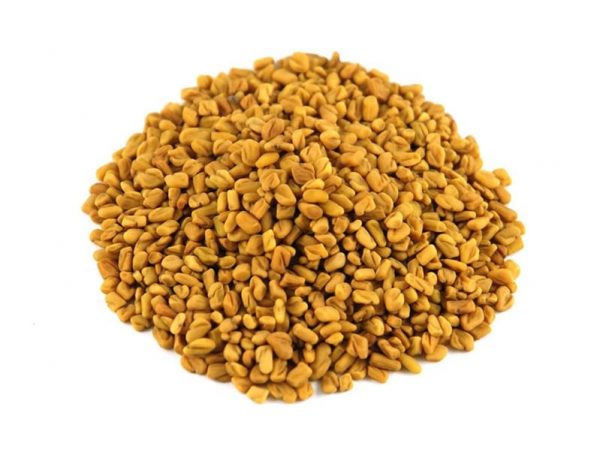
GARLIC
Garlic can combat sickness and improve heart health. Throughout ancient history, the main use of garlic was for its medicinal properties. We now know that most of these health effects are due to a compound called allicin, which is also responsible for garlic’s distinct smell.
Garlic supplementation is well known for combatting sickness, including the common cold. If you often get colds, then adding more garlic to your diet could be incredibly helpful. There is also convincing evidence for beneficial effects on heart health. For those with high cholesterol, garlic supplementation appears to reduce total and/or LDL cholesterol by about 10-15%. Human studies have also found garlic supplementation to cause significant reductions in blood pressure in people with high blood pressure. In one study, it was just as effective as a blood pressure lowering drug.
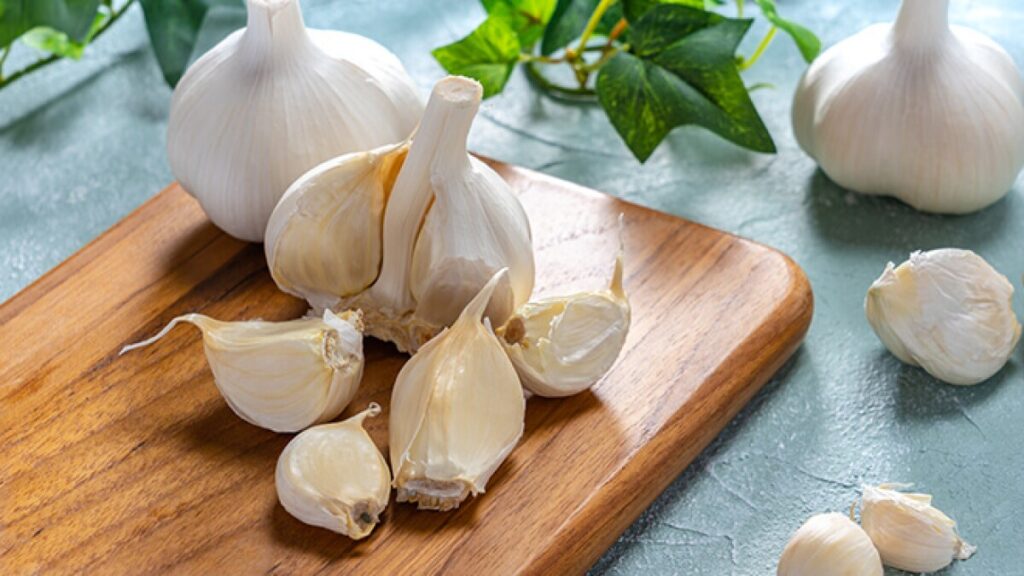
HOLY BASIL
Holy basil helps fight infections and boosts immunity. Not to be confused with regular basil or thai basil, holy basil is considered a sacred herb in India. Studies show that holy basil can inhibit the growth of a range of bacteria, yeasts and molds.
One small study also found that it can boost function of the immune system by increasing certain immune cells in the blood. Holy basil is also linked to reduced blood sugar levels before and after meals, as well as treating anxiety and anxiety-related depression. However, these studies were quite small, and more research is needed before any recommendations can be made.
BOTTOM LINE:
Holy basil appears to improve immune function and inhibit the growth of bacteria, yeasts and molds.

IRISH SEA MOSS
Irish moss, also called Irish sea moss (or sea moss) is scientifically known as Chrondus Crispus and is actually an algae despite being called a moss. It grows on the rocky coasts of the Atlantic of Europe and North America and also the North Pacific. When fresh it is soft and “can vary in color from a greenish-yellow, through red, to a dark purple or purplish-brown”.
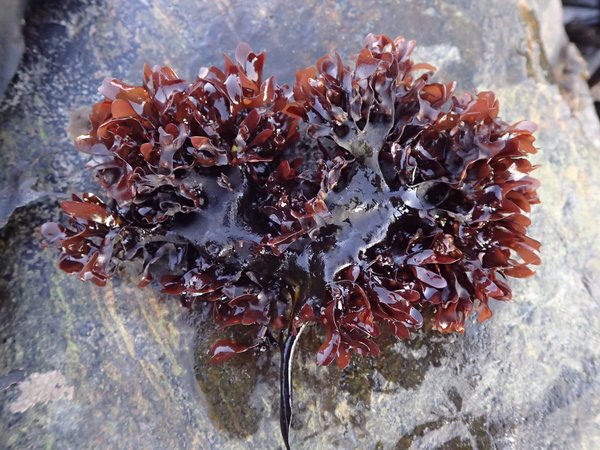
It is commonly used industrially as a thickener and emulsifier known as Carrageenan. This substance is extracted from the Irish sea moss and used to thicken products like milk, yogurt, baby formula, salad dressing, condensed milk, coconut milk, soymilk (and other vegan milks), toothpaste and shampoo.
However, once extracted in this form it no longer maintains its health benefits.
Along with Vitamins B2 and B9, Irish Moss (Chondrus Crispus) is especially rich in minerals such as calcium, magnesium, zinc and iodine, among others. Not only is it very beneficial to the bones, joints, and skin, helping to maintain bone strength and skin elasticity, it can also be applied topically to moisten and nourish the skin and hair.
Because Irish moss is gelatinous it can be used to quell hunger, this makes it great for weight loss as well as digestion. It coats and protects the stomach and intestinal wall with it’s jelly-like consistency which is also beneficial to people with ulcers. Additionally, the high iodine content has a beneficial effect on the thyroid gland which plays a role in the metabolism.
Irish moss energizes the body and is used in the Caribbean as an aphrodisiac to increase energy and libido. Because it’s so mineral-rich it is possible for one to survive on only Irish moss for prolonged periods of time. The Irish relied on it as a staple during the potato famine of the 19th century.
Treatment for ailments
- Helps to remove mucus from the body and is used to remove mucus from the lungs
- Can be used to treat colds coughs or respiratory illness
- Beneficial for the thyroid gland
- Can be applied to the skin for burns, rashes or as a facial mask
- Used to treat eczema psoriasis
- Learn more about this superfood
Irish moss can be acquired in it’s dried state in health food stores, Caribbean markets or you can buy some online. It then needs to be soaked for 4-6 hours or overnight, after which it has to be thoroughly rinsed to remove dirt, sand, salt, and debris before consumption.
In parts of China, the re-hydrated plant is eaten raw and added to salads or cold dishes are prepared by first making it into a gel and forming the gel into cubes. This is then sprinkled with vinegar and soy sauce, small bits of garlic are added and it is garnished with cilantro.
Irish moss gel is created differently in different parts of the world but is generally formed by boiling the re-hydrated plant down until it softens and most of the water evaporates. In Jamaica, people boil it down in a similar way but also mix it with linseed oil, isinglass and gum Arabic. It’s commonly used to make a drink in which milk, peanuts, sugar, vanilla, and nutmeg are blended together. The easiest way to make sea moss gel is to blend it with some water once it’s re-hydrated.
MORINGA
Moringa oleifera is a fast-growing, drought-resistant tree of the family Moringaceae, native to the Indian subcontinent. Common names include moringa, drumstick tree (from the long, slender, triangular seed-pods), horseradish tree (from the taste of the roots, which resembles horseradish), and ben oil tree or benzolive tree (from the oil which is derived from the seeds).

It is widely cultivated for its young seed pods and leaves used as vegetables and for traditional herbal medicine. It is also used for water purification. Although listed as an invasive species in several countries, Moleifera has “not been observed invading intact habitats or displacing native flora”, and so “should be regarded at present as a widely cultivated species with low invasive potential.”
The moringa tree is grown mainly in semiarid, tropical, and subtropical areas, corresponding in the United States to USDA hardiness zones 9 and 10. It tolerates a wide range of soil conditions, but prefers a neutral to slightly acidic (pH 6.3 to 7.0), well-drained sandy or loamy soil. In waterlogged soil, the roots have a tendency to rot. Moringa is a sun- and heat-loving plant, and does not tolerate freezing or frost. Moringa is particularly suitable for dry regions, as it can be grown using rainwater without expensive irrigation techniques. Moringa contains many healthful compounds such as:
- vitamin A
- vitamin B1 (thiamine)
- B2 (riboflavin)
- B3 (niacin), B-6
- folate and ascorbic acid (vitamin C)
- calcium
- potassium
- iron
- magnesium
- phosphorus
- zinc
- It is also extremely low in fats and contains no harmful cholesterol
What are the benefits? Moringa is believed to have many benefits and its uses range from health and beauty to helping prevent and cure diseases. The benefits of moringa include:
1. Protecting and nourishing skin and hair. Moringa seed oil is beneficial for protecting hair against free radicals and keeps it clean and healthy. Moringa also contains protein, which means it is helpful in protecting skin cells from damage. It also contains hydrating and detoxifying elements, which also boost the skin and hair. It can be successful in curing skin infections and sores.
2. Treating edema. Edema is a painful condition where fluid builds up in specific tissues in the body. The anti-inflammatory properties of moringa may be effective in preventing edema from developing.
3. Protecting the liver Moringa appears to protect the liver against damage caused by anti-tubercular drugs and can quicken its repair process.
4. Preventing and treating cancer. Moringa extracts contain properties that might help prevent cancer developing. It also contains niazimicin, which is a compound that suppresses the development of cancer cells.
5. Treating stomach complaints. Moringa extracts might help treat some stomach disorders, such as constipation, gastritis, and ulcerative colitis. The antibiotic and antibacterial properties of moringa may help inhibit the growth of various pathogens, and its high vitamin B content helps with digestion.
6. Fighting against bacterial diseases. Due to its antibacterial, antifungal, and antimicrobial properties, moringa extracts might combat infections caused by Salmonella, Rhizopus, and E. coli.
7. Making bones healthier. Moringa also contains calcium and phosphorous, which help keep bones healthy and strong. Along with its anti-inflammatory properties moringa extract might help to treat conditions such as arthritis and may also heal damaged bones.
8. Treating mood disorders. Moringa is thought to be helpful in treating depression, anxiety, and fatigue.
9. Protecting the cardiovascular system. The powerful antioxidants found in Moringa extract might help prevent cardiac damage and has also been shown to maintain a healthy heart.
10. Helping wounds to heal. Extract of moringa has been shown to help wounds close as well as reduce the appearance of scars.
11. Treating diabetes. Moringa helps to reduce the amount of glucose in the blood, as well as sugar and protein in the urine. This improved the hemoglobin levels and overall protein content in those tested.
12. Treating asthma. Moringa may help reduce the severity of some asthma attacks and protect against bronchial constrictions. It has also been shown to assist with better lung function and breathing overall.
13. Protecting against kidney disorders. People may be less likely to develop stones in the kidneys, bladder or uterus if they ingest moringa extract. Moringa contains high levels of antioxidants that might aid toxicity levels in the kidneys.
14. Reducing high blood pressure. Moringa contains isothiocyanate and niaziminin, compounds that help to stop arteries from thickening, which can cause blood pressure to rise.
15. Improving eye health. Moringa contains eyesight-improving properties thanks to its high antioxidant levels. Moringa may stop the dilation of retinal vessels, prevent the thickening of capillary membranes, and inhibit retinal dysfunction.
16. Treating anemia and sickle cell disease. Moringa might help a person’s body absorb more iron, therefore increasing their red blood cell count. It is thought the plant extract is very helpful in treating and preventing anemia and sickle cell disease.
OIL OF OREGANO
People have traditionally used oil of oregano for respiratory health. It’s also become a popular alternative remedy for cold and flu symptoms. Oregano oil is used to treat cold and flu symptoms, but it can be consumed in different forms depending on your preference. It can be purchased as an herbal supplement, tincture, or essential oil.
You can find it at most health food stores as a tincture or softgel capsule. You can also buy it in the form of a highly concentrated aromatic, volatile (tending to evaporate) essential oil for external use and aromatherapy. In alternative medicine, oregano oil is touted as a natural remedy for a range of health issues. It also can be taken in a variety of ways. Here’s how it may help:
- When taken orally, oregano oil may help with indigestion and gastrointestinal illnesses, as well as respiratory illnesses.
- When used with steam and inhaled, oregano oil may provide benefits for sinus and chest congestion and related respiratory illnesses.
- When diluted and used topically, oregano oil may help treat fungal and bacterial infections. It can also be applied to the skin for the treatment of acne, athlete’s foot, canker sores, psoriasis, rosacea, varicose veins, and warts.
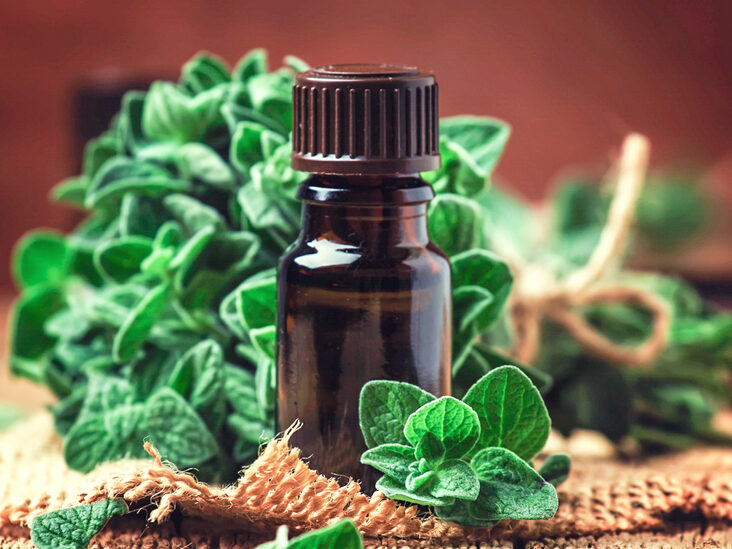
PEPPERMINT
Peppermint relieves IBS Pain and may reduce nausea. Peppermint has a long history of use in folk medicine and aromatherapy. As is the case with many herbs, it is the oily component that contains the agents responsible for the health effects.
Many studies have shown that peppermint oil can improve pain management in irritable bowel syndrome, or IBS. It appears to work by relaxing the smooth muscles in the colon, which relieves pain experienced during bowel movements. It also helps to reduce abdominal bloating, which is a common digestive symptom.
There are also some studies showing that peppermint in aromatherapy can help fight nausea. In a study of over 1,100 women in labor, peppermint aromatherapy caused significant reductions in nausea. It has also been shown to reduce nausea after surgery and C-section births.
BOTTOM LINE:
The natural oil in peppermint provides pain relief for those with IBS. It also has potent anti-nausea effects when used in aromatherapy.
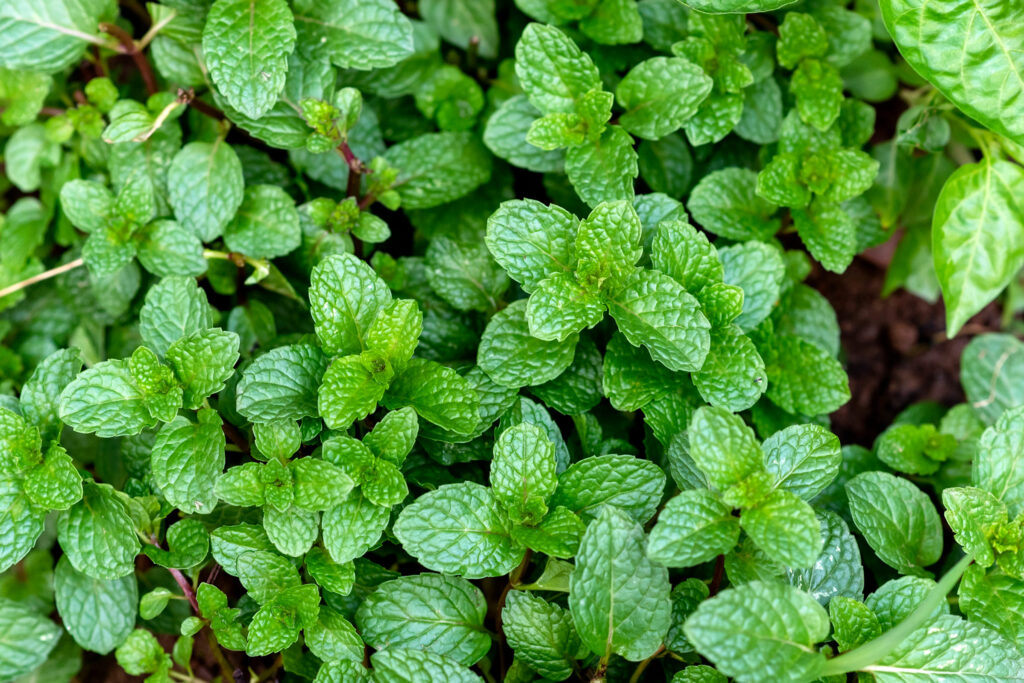
ROSEMARY
Rosemary can help prevent allergies and nasal congestion. The active ingredient in rosemary is called rosmarinic acid. This substance has been shown to suppress allergic responses and nasal congestion.
In a study with 29 individuals, both 50 and 200 mg doses of Rosmarinic acid were shown to suppress allergy symptoms. The number of immune cells in nasal mucus also decreased, with reduced congestion.
BOTTOM LINE:
Rosmarinic acid has anti-inflammatory effects that appear to suppress allergy symptoms and reduce nasal congestion.
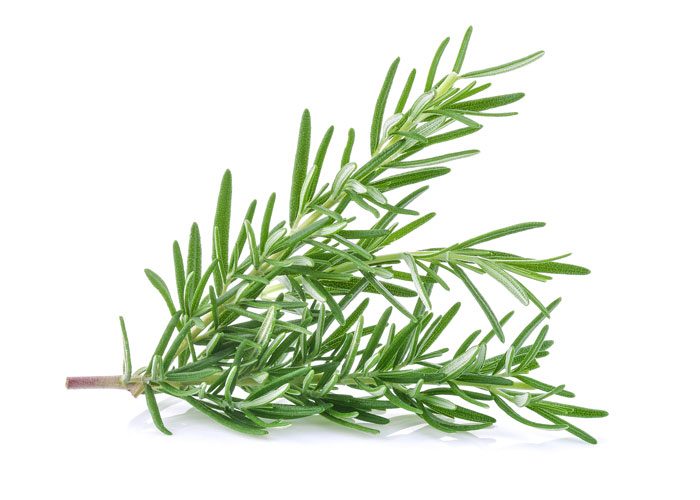
SAGE
Sage can improve brain function and memory. Sage gets its name from the Latin word Salvere, which means “to save.” It had a strong reputation for its healing properties during the middle ages, and was even used to help prevent the plague.
Current research indicates that sage may be able to improve brain function and memory, especially in people with Alzheimer’s disease. Alzheimer’s disease is accompanied by a drop in the level of acetylcholine, a chemical messenger in the brain. Sage inhibits the breakdown of acetylcholine.
In a 4-month study of 42 individuals with mild to moderate Alzheimer’s disease, sage extract was shown to produce significant improvements in brain function. Other studies have also shown that sage can improve memory function in healthy people, both young and old.
BOTTOM LINE:
There is promising evidence that sage extract can improve brain and memory function, especially in individuals with Alzheimer’s disease.
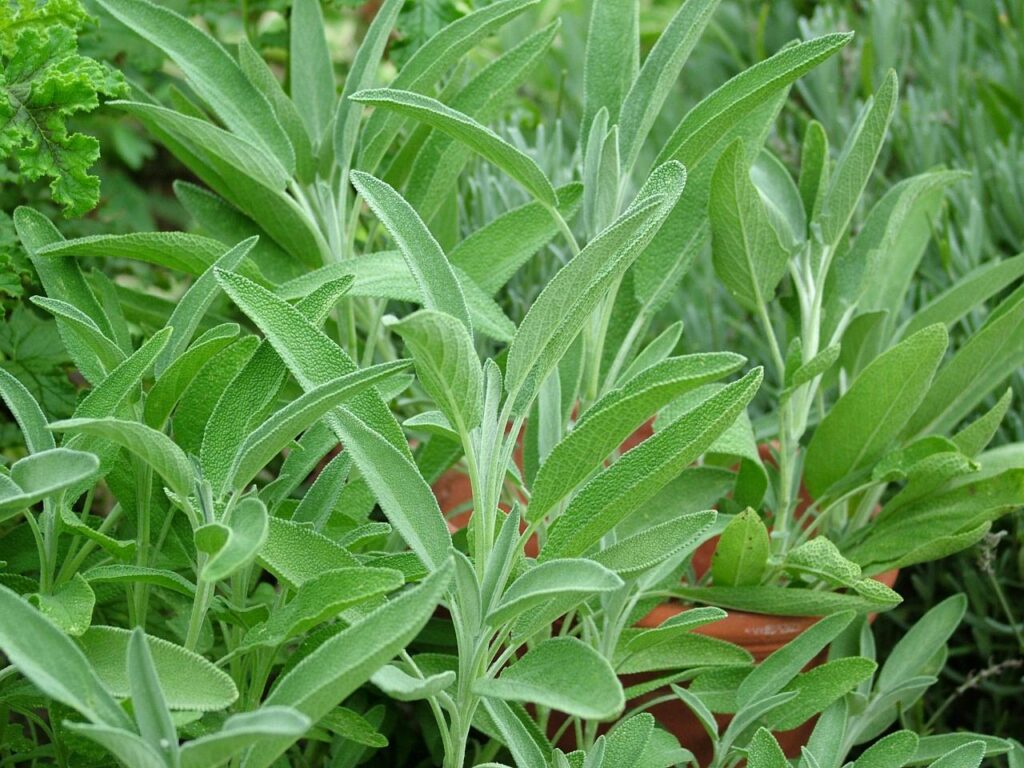
TUMERIC
Turmeric has been called by some as the most powerful herb on earth. In combination with Boswellia, it packs a great punch against inflammation. It contains curcumin, a substance with powerful anti-inflammatory effects. Turmeric is the spice that gives curry its yellow color. It contains several compounds with medicinal properties, the most important of which is curcumin.
Curcumin is a remarkably powerful antioxidant, helping to fight oxidative damage and boosting the body’s own antioxidant enzymes. This is important, because oxidative damage is believed to be one of the key mechanisms behind ageing and many diseases.
Curcumin is also strongly anti-inflammatory, to the point where it matches the effectiveness of some anti-inflammatory drugs. Given that long-term, low-level inflammation plays a major role in almost every chronic Western disease, it is not surprising to see that curcumin is linked to a variety of health benefits.
Studies suggest that it can improve brain function, fight Alzheimer’s, reduce the risk of heart disease and cancer, and relieve arthritis, to name a few.
BOTTOM LINE:
Studies have shown that curcumin, the active ingredient in the spice turmeric, has major benefits for many aspects of health.
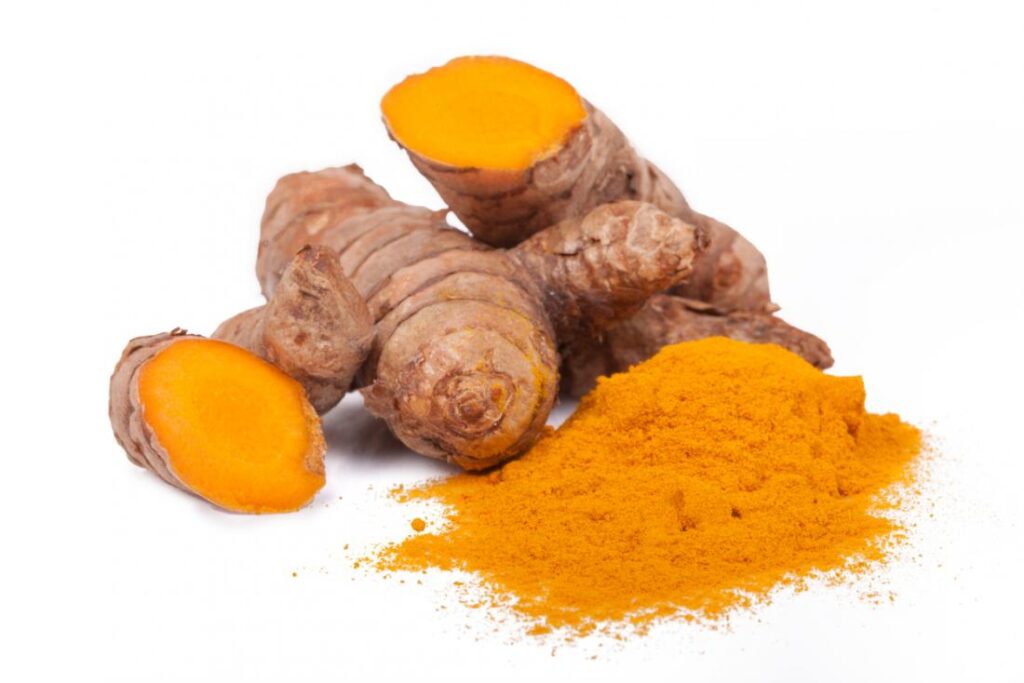
WATERCRESS
Watercress is an often overlooked leafy green that packs a powerful nutrient punch. Its small, round leaves and edible stems have a peppery, slightly spicy flavor. Watercress is part of the Brassicaceae family of vegetables, which also includes kale, Brussels sprouts and cabbage.
Once considered a weed, it was first cultivated in the UK in the early 1800s but is now grown in watery beds throughout the world. Here are 10 impressive health benefits of watercress.
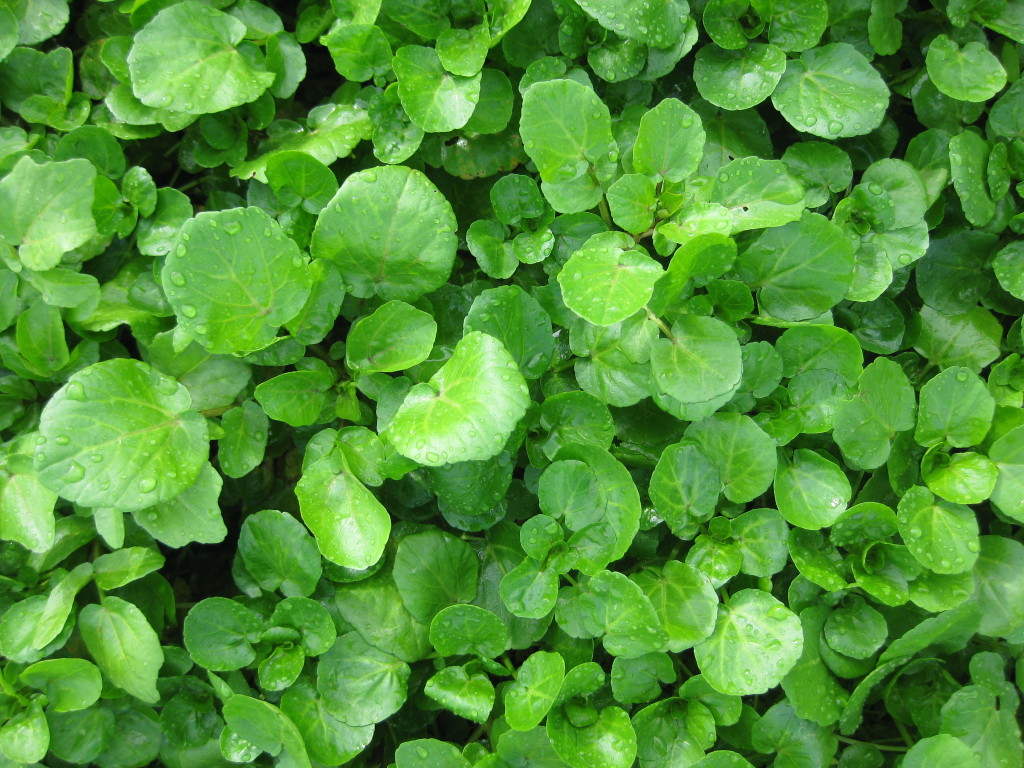
- Packed with Nutrients, Particularly Vitamin K– Watercress is low in calories but packs a vast array of nutrients. Nutrient density is a measure of the nutrients a food contains in relation to how many calories it provides. Therefore, watercress is an extremely nutrient-dense food. In fact, it’s ranked number one on the US Centers for Disease Control’s Powerhouse Fruits and Vegetables list.
One cup (34 grams) of watercress contains the following
Calories: 4
Carbs: 0.4 grams
Protein: 0.8 grams
Fat: 0 grams
Fiber: 0.2 grams
Vitamin A: 22% of the Reference Daily Intake (RDI)
Vitamin C: 24% of the RDI
Vitamin K: 106% of the RDI
Calcium: 4% of the RDI
Manganese: 4% of the RDI
As you can see, one cup (34 grams) of watercress provides over 100% of the RDI for vitamin K, a fat-soluble vitamin necessary for blood clotting and healthy bones (4).
Watercress also contains small amounts of vitamin E, thiamine, riboflavin, vitamin B6, folate, pantothenic acid, magnesium, phosphorus, potassium, sodium and copper (3).
SUMMARY
Watercress boasts many important vitamins and minerals, including over 100% of the RDI for vitamin K.
- High Antioxidant Content May Lower Your Risk of Chronic Diseases
Watercress is packed with plant compounds called antioxidants that protect against cell damage caused by free radicals, which are harmful molecules that lead to oxidative stress. Oxidative stress has been associated with several chronic illnesses including diabetes, cancer and cardiovascular disease. Fortunately, diets high in antioxidant-rich foods like watercress can help protect against oxidative stress, which may lower your risk of these diseases.
One study on the antioxidant compounds in 12 different cruciferous vegetables found over 40 unique flavonoids, a type of plant chemical, in watercress. In fact, watercress outperformed all other vegetables in this study in terms of total amount of phenols and the ability to neutralize free radicals. What’s more, studies have linked the antioxidants in watercress to a lower risk of cancer, diabetes and heart disease.
SUMMARY
Watercress is extremely high in antioxidants, which may help prevent chronic diseases, such as diabetes, cancer and heart disease.
- Contains Compounds That May Prevent Certain Types of Cancer
Because watercress is high in phytochemicals, it may reduce your risk of developing certain types of cancer.
Watercress and other cruciferous vegetables contain glucosinolates, which are activated to compounds called isothiocyanates when they’re cut with a knife or chewed. Isothiocyanates include chemicals such as sulforaphane and phenethyl isothiocyanate (PEITC).
These compounds protect against cancer by safeguarding healthy cells from damage, inactivating carcinogenic chemicals and blocking the growth and spread of tumors. Isothiocyanates found in watercress have been shown to prevent colon, lung, prostate and skin cancers. Additionally, research demonstrates that the isothiocyanates and sulforaphane found in watercress suppress the growth of breast cancer cells.
SUMMARY
Watercress contains potent anticancer compounds called isothiocyanates that have been shown to ward off several types of cancer.
- Beneficial for Heart Health in Many Impressive Ways
Eating watercress may be beneficial for heart health in several different ways. Watercress is part of the cruciferous family of vegetables. A diet high in cruciferous vegetables may benefit heart health. A review of studies in over 500,000 individuals linked eating cruciferous vegetables to a 16% reduced risk of heart disease. Antioxidants improve heart health. Watercress contains the antioxidants beta carotene, zeaxanthin and lutein. Low levels of these carotenoids are associated with heart disease and high blood pressure. Studies have shown that high levels of carotenoids not only protect against the development of heart disease but also lower your risk of heart attack and strokes.
Dietary nitrates boost blood vessel health. Watercress also contains dietary nitrates, which boost blood vessel health by reducing inflammation and decreasing the stiffness and thickness of your blood vessels.
Dietary nitrates have also been shown to lower blood pressure by increasing nitric oxide in your blood.
Watercress may lower cholesterol. Furthermore, watercress may help lower cholesterol, which can improve heart health. In a 10-day study in rats with high cholesterol, treatment with watercress extract lowered total cholesterol by 34% and “bad” LDL cholesterol by 53%.
SUMMARY
Watercress has many potential benefits for heart health, including lowering blood pressure and cholesterol levels. Diets high in cruciferous vegetables are linked to a lower risk of heart disease.
- Mineral and Vitamin K Contents Protect Against Osteoporosis
Watercress contains many minerals necessary for bone health, including calcium, magnesium, potassium and phosphorus. Though calcium is well-known for its effects on bone health, magnesium, vitamin K and potassium also play important roles. A balanced diet high in nutrient-dense vegetables is correlated with a positive effect on bone health.
Additionally, one cup (34 grams) of watercress provides more than 100% of the RDI for vitamin K. Vitamin K is a component of osteocalcin, a protein that makes up healthy bone tissue and helps regulate bone turnover.
In one study, people with the highest intake of vitamin K were 35% less likely to experience a hip fracture than people with the lowest intake.
SUMMARY
Watercress contains many nutrients important for bone health, including over 100% of the RDI for vitamin K.
- Boosts Immune Function Thanks to High Vitamin C Levels
Watercress contains 15 mg of vitamin C per cup (34 grams), which is 20% of the RDI for women and 17% for men. Vitamin C is renowned for its beneficial effects on immune health. Deficiency in vitamin C has been linked to decreased immune function and increased inflammation. Vitamin C boosts your immune system by increasing the production of white blood cells that fight infections. Though studies in the general population have not conclusively shown that vitamin C decreases your risk of the common cold, it does reduce the duration of symptoms by 8%.
SUMMARY
Watercress is a good source of vitamin C, which promotes a healthy immune system and reduces your risk of infection.
- Nutrient Density May Aid Weight Loss
Though it hasn’t been studied specifically, watercress may have benefits for weight management as well. It’s an extremely nutrient-dense food — one cup (34 grams) contains only four calories but provides several important nutrients. If you’re trying to lose weight, adding this nutritious, low-calorie vegetable to your diet is certainly worth a try.
SUMMARY
Watercress is a highly nutritious vegetable that can help fill you up for very few calories, which may aid weight loss.
- Dietary Nitrates May Enhance Athletic Performance
Vegetables in the Brassicaceae family contain high levels of dietary nitrates. Nitrates are compounds found naturally in foods such as beets, radishes and leafy green vegetables like watercress. They relax your blood vessels and increase the amount of nitric oxide in your blood, which may improve exercise performance.
What’s more, dietary nitrate lowers resting blood pressure and reduces the amount of oxygen needed during exercise, which may increase exercise tolerance.
Several studies on dietary nitrates from beets and other vegetables have demonstrated improved exercise performance in athletes. However, a small study in healthy individuals taking 100 grams of watercress daily for seven days found that watercress increased carbon dioxide production during exercise, which may have a negative impact on performance. While a considerable amount of research indicates that dietary nitrates may enhance exercise performance, conclusive evidence that watercress improves athletic performance is lacking.
SUMMARY
Watercress is a source of dietary nitrates, which have been linked to improved athletic performance. However, there are currently no studies on watercress that confirm these beneficial effects.
- Rich in Carotenoids and Vitamin C, Which May Protect Eye Health
Watercress contains lutein and zeaxanthin, which are antioxidant compounds in the carotenoid family.
Numerous studies have shown that lutein and zeaxanthin are essential for eye health. In particular, they protect your eyes against damage from blue light. Lutein and zeaxanthin have also been linked to a lower risk of developing age-related macular degeneration and cataracts. Furthermore, the vitamin C in watercress is associated with a lower risk of developing cataracts as well.
SUMMARY
Watercress contains the carotenoids lutein and zeaxanthin, which are essential for eye health. Watercress is also a good source of vitamin C, which may protect against cataracts.
- Versatile Addition to Any Meal
Watercress can be used in a wide variety of dishes. However, to get the most benefits from its active antioxidant compounds, it’s best eaten raw or lightly steamed. Here are some easy ways to add watercress to your diet:
- Sprinkle it on your salad.
- Stir it into your soup near the end of cooking.
- Use it to replace lettuce in a sandwich.
- Turn it into pesto by blending it with garlic and olive oil.
- Serve it with eggs.
- Use it to top any dish.
SUMMARY
Watercress is a versatile addition to your meal routine. Eat it in a salad, soup or sandwich or use it to garnish any dish.
The Bottom Line
Watercress is a powerhouse vegetable that packs several important nutrients but is extremely low in calories. It contains a plethora of antioxidants, which may lower your risk of heart disease and several types of cancer. It’s also a good source of minerals that protect your bones. Additionally, watercress makes a delicious addition to any meal and is a nice change from the usual lettuce or spinach. Though watercress is hardly one of the most popular vegetables, its nutrition profile makes it a stellar addition to your diet.

